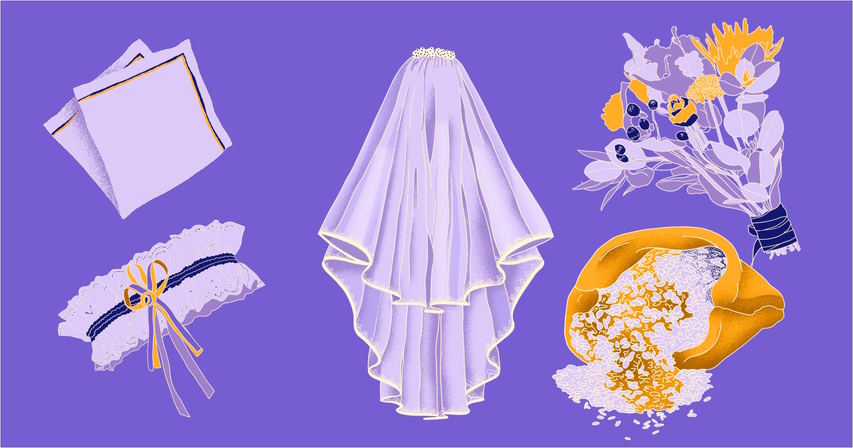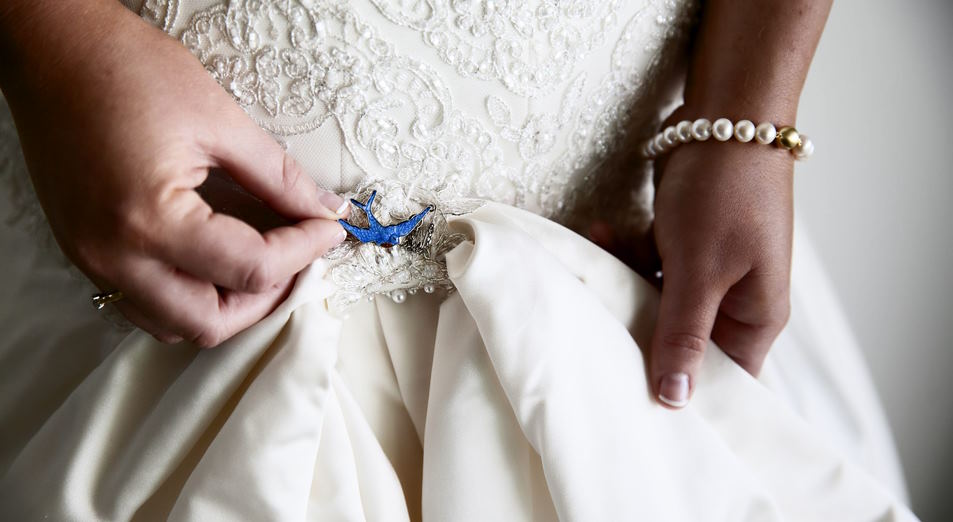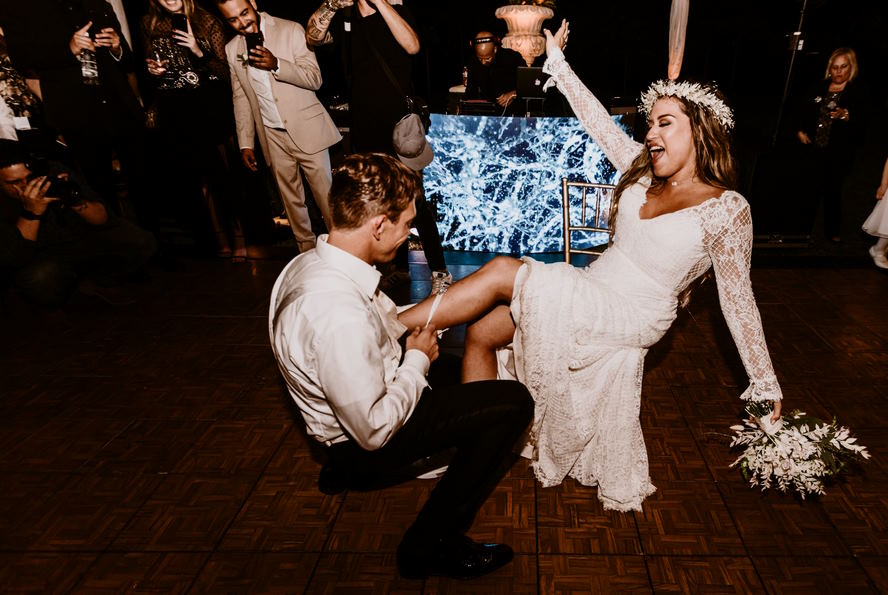
The History and Meaning Behind Popular Wedding Traditions
- Published in: Plan a Wedding
- Permalink
Weddings are one of the most important and meaningful events in many people’s lives. They are a celebration of love, commitment, and the start of a new life together. Throughout history, weddings have been marked by various traditions that hold deep symbolic meanings and cultural significance. From the white wedding dress to the exchanging of rings, each tradition has its own unique history and symbolism. We will explore the history and meaning behind some of the most popular wedding traditions, including something old, something new, something borrowed, something blue, the white wedding dress, the bridal veil, the wedding ring, the bouquet and garter, and the wedding cake. By understanding the significance of these traditions, we can gain a greater appreciation for the rich history and cultural diversity of weddings, as well as the enduring power of love and commitment.
Something Old, Something New, Something Borrowed, Something Blue
The tradition of “Something Old, Something New, Something Borrowed, Something Blue” is a well-known and beloved wedding custom that has been around for centuries. This phrase is believed to have originated in England during the Victorian era and has since become a popular part of wedding culture worldwide.
The “something old” represents the bride’s connection to her past and her family. This item can be a piece of jewelry, such as a grandmother’s necklace or a great-grandmother’s brooch. It can also be a family heirloom, such as a handkerchief or a piece of lace from a mother or grandmother’s wedding dress. Whatever the item may be, it serves as a reminder of the bride’s roots and the love that has been passed down through her family.
The “something new” represents the bride’s hope for the future and the new life she will start with her partner. This item is typically something the bride purchases herself, such as a new pair of shoes or a new piece of jewelry. It symbolizes the excitement and anticipation of the future and the new memories that will be made.
The “something borrowed” represents the bride’s connection to her friends and family, and the idea that they will always be there to support her. This item is usually borrowed from a family member or close friend and can be anything from a piece of jewelry to a handkerchief. It serves as a reminder that the bride is surrounded by love and support, even as she starts her new life with her partner.

Finally, the “something blue” is a symbol of love, fidelity, and purity. In some cultures, blue is also considered to be a lucky color. The bride can incorporate the color blue in a number of ways, such as wearing blue shoes or adding blue accents to her dress. Some brides choose to wear a blue garter or carry a blue bouquet. Whatever the method, the something blue serves as a reminder of the commitment and love that the bride and groom share.
While the tradition of “Something Old, Something New, Something Borrowed, Something Blue” has been around for centuries, modern interpretations and variations of the tradition are becoming increasingly popular. Some brides choose to incorporate all four elements into one item, such as a piece of jewelry that combines something old, something new, something borrowed, and something blue. Others choose to incorporate the tradition into their wedding theme or decor. Regardless of how the tradition is incorporated, it serves as a meaningful reminder of the past, present, and future of the bride’s life and love.
The White Wedding Dress
The white wedding dress has become an iconic symbol of Western weddings, but it wasn’t always the norm. In fact, the tradition of wearing a white wedding dress is a relatively recent phenomenon, dating back to the 19th century. Prior to that, brides wore dresses in a variety of colors, including red, blue, and even black.
The trend towards white wedding dresses began in 1840, when Queen Victoria of England wore a white dress for her wedding. The white dress was seen as a symbol of purity and innocence, and it quickly became popular among the upper classes. However, it wasn’t until the mid-20th century that the white wedding dress became a staple of Western weddings.
In many cultures, white is not traditionally associated with weddings. In some Asian cultures, for example, brides wear red dresses, which are seen as a symbol of good luck and prosperity. In some African cultures, brides wear brightly colored dresses and headpieces. In India, brides wear intricate sarees in a variety of colors, depending on the region and culture.
Despite this, the white wedding dress remains a popular tradition in Western weddings. However, contemporary interpretations of the white wedding dress are becoming more diverse. Some brides choose to add pops of color to their dresses, such as a colored sash or colorful embroidery. Others choose non-traditional fabrics, such as lace or tulle, to add a unique twist to their dresses.
In recent years, there has also been a trend towards more sustainable and ethical wedding fashion. Some brides are choosing to wear vintage or second-hand dresses, or opting for dresses made from eco-friendly materials. This trend towards sustainability is reflective of a broader cultural shift towards more conscious consumerism and environmentalism.
In summary, while the tradition of the white wedding dress has a relatively short history, it has become an important part of Western wedding culture. While white may not be the traditional color of wedding dresses in other cultures, contemporary interpretations of the white dress are becoming more diverse and sustainable. Ultimately, the dress a bride chooses to wear on her wedding day should reflect her personal style and values.

The Wedding Ring
The wedding ring has been a symbol of love and commitment for centuries, with its origins dating back to ancient Egypt and Rome. In many cultures, the wedding ring is worn on the fourth finger of the left hand, which is believed to be connected directly to the heart.
Throughout history, wedding ring styles and materials have evolved to reflect changing cultural and societal norms. In ancient Egypt, for example, wedding rings were made from reeds and other natural materials. In ancient Rome, gold rings were exchanged as a symbol of the couple’s commitment. In medieval Europe, rings often featured intricate designs and gemstones, and were worn as a status symbol.
Today, wedding rings are available in a wide variety of styles and materials, from classic gold bands to contemporary designs featuring diamonds and other precious stones. Many couples also choose to personalize their rings with engravings or other special touches.
In addition to their aesthetic qualities, wedding rings also hold symbolic significance. The unbroken circle of a wedding ring represents the never-ending love and commitment between partners. The exchange of rings also serves as a public declaration of the couple’s love and commitment to each other.
Contemporary trends in wedding ring design and symbolism are also evolving to reflect changing cultural and societal norms. Some couples choose to forgo traditional wedding rings altogether in favor of tattoos, which serve as a permanent symbol of their commitment. Others choose to incorporate non-traditional materials, such as wood or silicone, into their wedding ring designs.
